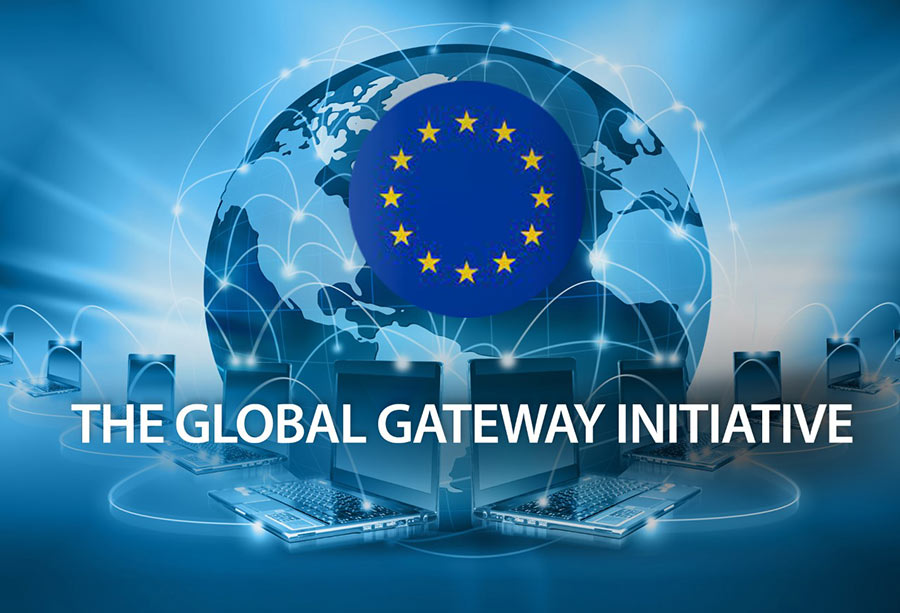The EU’s Global Gateway: A Belt & Road Alternative?

The EU has launched its ‘alternative’ to China’s Belt and Road for the EU, with EU Commision President Ursula von der Leyen stating “We want to create links and not dependencies” while clarifying this by stating “It does not make sense for Europe to build roads between a Chinese owned copper mine and a Chinese owned harbour”
The Global Gateway is to be positioned as “a trusted brand around the world” and is intended to “build Global Gateway partnerships around the world. We want investments in quality infrastructure, connecting goods, people and services around the world.”
But what does this actually mean?
Firstly, let’s look at the detail. There isn’t a lot. There is no mention of any dedicated office or staff, and no mention of any budget, meaning at present the EU “Global Gateway” is pure rhetoric and nothing else. Von der Leyen was asked three months ago to come up with a name and logo, of which just a name now exists. (She can purchase the rights to the image shown above for a suitable fee if she wants. It took our design team 20 minutes) Mention was made of creating ‘connectivity projects with Africa’ but again, the concept is light to invisible on any specifics.
Also noted with both a lack of any budget and the comment “we want investments” suggesting the EU has little to no intention of funding the Global Gateway. That means the EU will need to find access to capital and organize the various EU export credit and development agencies to do so. Explaining to the democratically elected Finance Minister of Poland why he should spend Polish money on a road between say Addis Ababa and the Red Sea might take a bit of doing when Warsaw needs metro extensions. And so on.
Such projects will also prove difficult to sell to EU financial institutions, who will not be willing to lend money at rates competitive to China’s normal Exim Bank standard lending of 2%. So, who will provide the capital?
Von der Leyen will soon find the ‘No money, no honey’ maxim applies when it comes to raising finance for projects that are ‘global’ – in other words, with a non-EU component. That could be resolved with partners such as the US, meeting connectivity costs halfway, but it is highly unlikely to happen with regions such as Africa. Maybe Russia could step in – it has a 2,250km border with the EU that could use some investment and revitalization.
Also odd is the statement about not building roads between Chinese owned mines and harbours. Why not? Contracts are agreed – often with significant Government oversight – over commodities and clear division of the mined or piped assets. As for harbours, China already owns, or part owns many EU ports. The list includes Antwerp, Bilbao, Bruges, Dunkirk, Genoa, Le Havre, Marsaxloxx, Marseille, Nantes, Piraeus, Rotterdam, and Valencia. The EU will be spending on connectivity infrastructure with and between these and other facilities regardless of whether von der Leyen likes it or not.
Ownership of facilities is not the issue – the Chinese operators of these ports have invested to upgrade them and will expect to make – or lose money – in accordance with how efficient, effective, and ultimately profitable they are. China will then pay the requisite profits and other taxes as required to each specific EU nation and in accordance with EU laws. Von der Leyen would be far better off trying to close off the US company Amazon’s attempts to minimize EU taxes than suggest it doesn’t make sense to build roads to Chinese owned harbours. The concept makes no sense.
So, what is left for the “Global Gateway”? It has no resources, no budget, no staff or offices and no projects. If as Chairman of my board, I tried to tell my colleagues that was an impressive development strategy they would laugh me out of the room. The EU needs to put meat on the bones if it is going to come up with anything to compete with China’s infrastructure build. Just as ‘Build Back Better’ has failed to come up with anything concrete – so has the EU.
Brussels appears to be competing with Washington for who has the most useless BRI alternative plan.
But there are reasons for this. Last week, von der Leyen also suggested the EU build up its military resources to develop an EU Army, saying that in military terms “It is time for Europe to step up to the next level.”
The EU already spends about 1.5 percent of its GDP – equal to €223.4 billion – per annum under its Common Security and Defense Policy (CSDP), with significant increases certain should an EU Army be developed. That may be one reason there is no apparent budget for the “Global Gateway” – with Brussels pondering spending its cash on military equipment and soldiers. Africa might have to wait awhile longer for the “Global Gateway” to finance any interconnecting EU infrastructure.
But all is not yet lost for the Africans. China is continuing to pour Belt and Road Initiative capital in, while Russia is also funding infrastructure. The next power to do so may not be the EU, but stirrings of the UK’s significant clout through the 19 African members of its Commonwealth – which are already beginning to see improved engagement, trade development and investment. For the EU though, Brussels strategy of the “Global Gateway” is a mirage, and nothing much more than political hot air of little substance. No money – no honey.
Related Reading
About Us
Silk Road Briefing is written by Dezan Shira & Associates. The firm has 28 offices throughout Asia, and assists foreign investors into the region. For strategic advisory and business intelligence issues please contact the firm at silkroad@dezshira.com or visit www.dezshira.com





